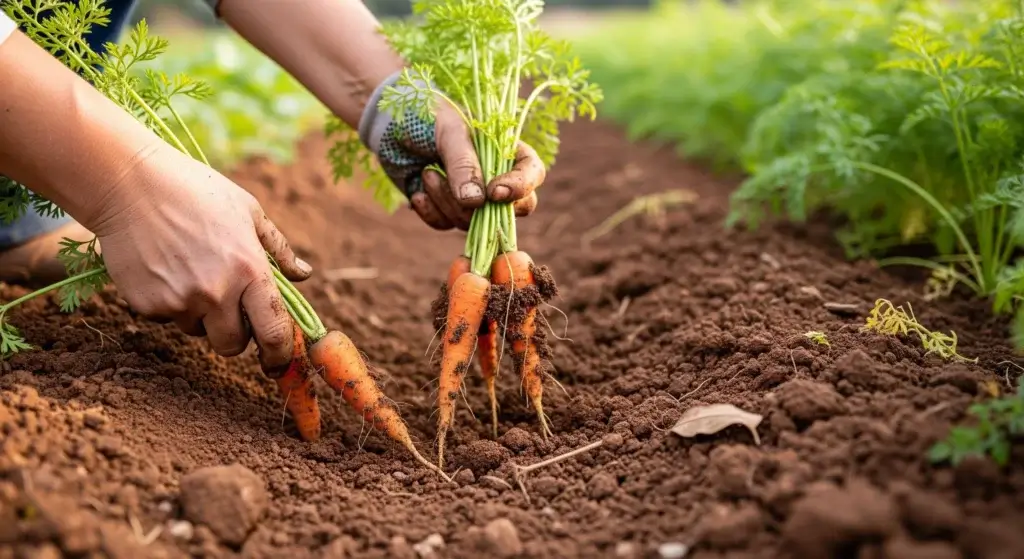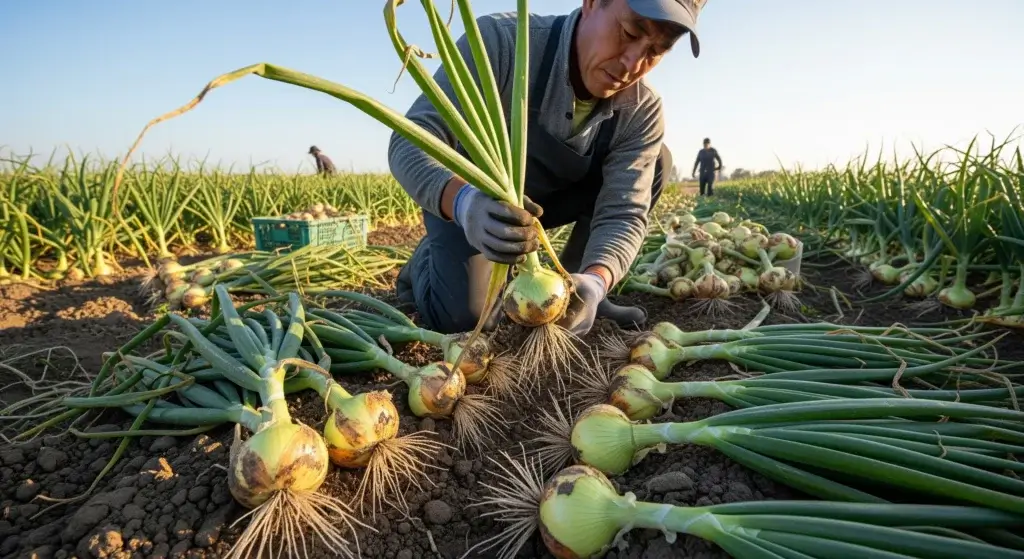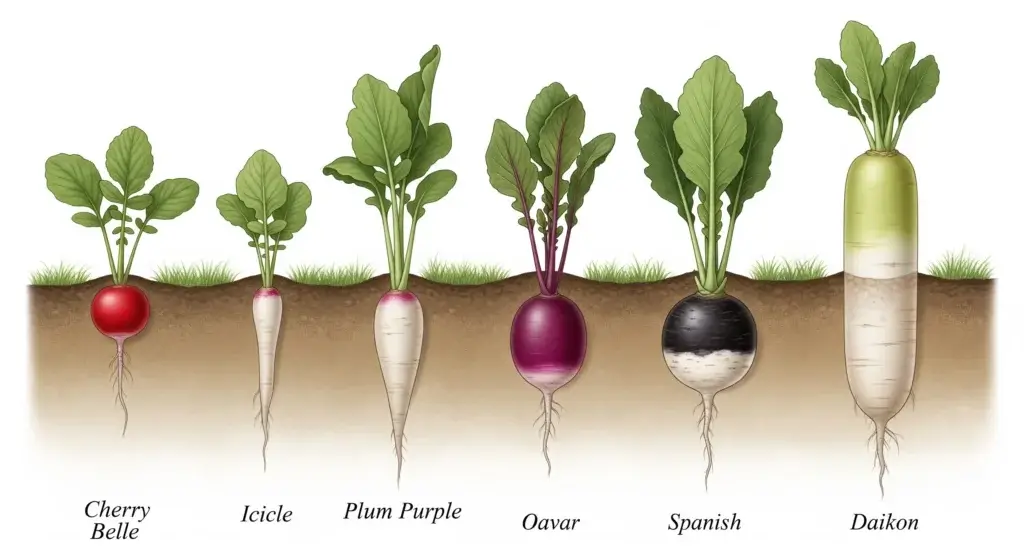
There’s nothing quite like plucking fresh, crunchy lettuce straight from your backyard—or balcony—garden.
But if your lettuce is wilting, tasting bitter, or flat-out dying before it even makes it to your plate, you’re definitely not alone.
Even seasoned green thumbs slip up on one critical detail that secretly wrecks their crop.
In this guide, we’re spilling the tea (or should we say, the compost) on the #1 mistake that’s sabotaging your lettuce.
We’ll break down why it happens, how to spot it early, and the quick fixes you need to turn things around.
Stay tuned—your next salad could be garden-to-table perfection.
What’s the Most Common Mistake Killing Lettuce?
Here’s the not-so-sweet tea: the #1 reason your lettuce is struggling isn’t bad soil or watering mistakes—it’s too much heat and sun.
Lettuce (Lactuca sativa) loves basking in full sun only when the weather is cool and comfy.
Think 60°F to 70°F (15°C to 21°C)—basically sweater weather, not beach weather.
But once temps crank up, especially in warmer zones, lettuce gets dramatic:
- It wilts faster than a TikTok trend.
- It turns bitter (literally, not just emotionally).
- It bolts, meaning it shoots up flowers and seeds overnight like it’s speed-running to the finish line.
- And worst of all, it dies off before you even get your first salad.
According to the University of California Agriculture and Natural Resources, heat stress doesn’t just make lettuce a little cranky—it completely messes with its flavor, texture, and survival.
If you want crisp, sweet leaves instead of a sad, bitter mess, you’ve got to keep your lettuce cool and chill—kind of like keeping your sourdough starter happy during a heatwave.
Why Does Heat and Sun Stress Lettuce?
Lettuce isn’t built for drama, but when it gets too hot and sunny, it has a full-blown crisis.
Here’s the science behind the meltdown:
- Lettuce has shallow roots and super delicate leaves, which means it loses water fast—kind of like trying to keep a popsicle from melting in the summer sun.
- When things heat up, lettuce slams the brakes on photosynthesis (that’s the plant’s version of making food). It’s basically trying to survive, not thrive.
- The hotter it gets, the more the plant pumps out bitter-tasting compounds as a defense move (no one wants to get eaten when they’re stressed).
- Then comes the final act: bolting. When you see skinny flower stalks shooting up, your lettuce is officially calling it quits and trying to reproduce before it keels over.
Signs your lettuce is waving a white flag? Tiny, tight heads, that nasty bitter flavor, and a random flower explosion.

How to Protect Your Lettuce From Heat and Sun Damage
Good news: Preventing heat stress isn’t rocket science.
With the right moves, you can protect your lettuce from the summer sizzle and keep those leaves fresh and crisp.
Here’s your ultimate guide to surviving the heatwave and getting that next delicious harvest.
Time your planting right
Best practice:
Plant lettuce in early spring or late summer for a fall harvest.
If you’re in a warm area, avoid the peak summer heat for planting unless you’re living in a cooler climate (no one wants to play in a 100°F garden).
Pro tip:
Use a soil thermometer to make sure the soil is below 75°F (24°C) when planting.
It’s like making sure the pool water is just right before you dive in—temperature matters!
Provide partial shade
Best practice:
Throw some shade on your lettuce during the hottest part of the day!
Use shade cloth (30%–50% shade) or plant your lettuce next to taller crops like tomatoes or corn to naturally cool things down.
DIY hack:
Create your own mini-greenhouse with old bed sheets or even umbrellas during heatwaves.
Think of it like giving your lettuce a beach umbrella.
Pro insight:
Research from HortTechnology Journal (2016) shows that just 30% shade significantly reduces bolting and keeps lettuce fresh during warm temps.
Like giving your plant a cool breeze on a hot day.
Mulch Generously
Best practice:
Mulch is your lettuce’s best friend.
Apply a 1–2 inch layer of organic mulch (straw, shredded leaves, or compost) around the base.
Why it works:
- Keeps the soil cooler—like turning on the AC for your lettuce.
- Locks in moisture, so your lettuce doesn’t have to worry about dehydration.
- Stops pesky weeds from stealing the spotlight.
Water deeply and regularly
Best practice:
Water deeply 2–3 times per week, adjusting for weather.
Water early in the morning to minimize evaporation and avoid late-day overhead watering (because nobody likes soggy lettuce and fungal diseases).
Pro tip:
Install a drip irrigation system or soaker hoses for consistent, waste-free watering.
You’ll be the water-saving hero of your garden!
Choose heat-tolerant varieties
Best practice:
Pick lettuce varieties that can handle the heat—because not all lettuce is created equal. Look for heat-tolerant types like:
‘Jericho’ (Romaine)
‘Summertime’ (Butterhead)
‘Sierra’ (Batavian)
‘Salad Bowl’ (Looseleaf)
Pro tip:
Seed packets often say “slow to bolt” or “heat-tolerant,” so keep an eye out when buying seeds. Like buying a car with better air conditioning—it’s an investment in survival!

Quick Lettuce Care Checklist
| Task |
Recommendation
|
| Planting Season |
Early spring or late summer
|
| Light |
4–6 hours of sun + partial shade in afternoon
|
| Watering |
Deeply 2–3 times a week
|
| Soil |
Loose, rich, well-draining
|
| Mulch |
1–2 inches organic mulch
|
| Temperature |
Ideal: 60°F–70°F (15°C–21°C)
|
Other Common Lettuce Problems to Watch For
Lettuce may seem like the low-maintenance diva of the garden, but even it has its share of drama.
Beyond heat and sun, there are a few more villains that can throw off your lettuce’s vibe.
Let’s break down these common lettuce issues so you can tackle them like a pro.
Pests
Aphids, slugs, snails, and cutworms can sneak in and wreak havoc on young lettuce leaves.
These garden invaders love to snack on tender lettuce, leaving behind damage that can stunt growth.
How to fight back
- Use row covers to keep pests out.
- Go for organic sprays that are gentle on the environment but tough on bugs.
- Try diatomaceous earth around your plants—this natural solution works like a bug bouncer, keeping the unwanted pests at bay.
Nutrient deficiency
If your lettuce is turning yellow or looks a bit anemic, it could be a sign of nitrogen deficiency.
Nitrogen is the VIP nutrient that makes plants green and strong.
How to fix it
- Apply a balanced organic fertilizer early in the season.
- Use a slow-release fertilizer to ensure steady nourishment, helping your lettuce stay vibrant and healthy—think of it as giving your lettuce its daily dose of superpowers.
Poor soil
Compacted or waterlogged soil can leave your lettuce’s roots gasping for air and water, eventually leading to root rot.
And let’s be real—rotting roots = sad lettuce.
How to fix it
- Amend the soil with compost or organic matter to improve both drainage and fertility.
- Make sure your soil is loose and well-draining—this is the foundation for lettuce success. Think of it like giving your lettuce a comfy bed to grow in, instead of a cramped, soggy mess.

FAQs About Growing Lettuce
Absolutely! Lettuce grows very well under grow lights or near bright windows. Just ensure temperatures stay within the ideal range.
Look for tall central stalks emerging from the center of the plant, often followed by flowers. Leaves will also become tougher and bitter.
No, you can harvest the outer leaves first (“cut and come again” method) and allow the plant to continue growing.
Final Thoughts
If your lettuce is wilting, turning bitter, or bolting, the #1 culprit is often too much heat and sunlight.
Lettuce thrives in cooler temps and can’t handle the intense summer sun.
To protect your crop, plant it in early spring or late summer, provide some shade during peak heat, mulch to keep the soil cool, and water deeply.
Plus, consider heat-tolerant varieties like ‘Jericho’ Romaine or ‘Summertime’ Butterhead.
Beyond heat, watch out for pests, nutrient deficiencies, and poor soil.
With a little TLC—timing, shade, and smart watering—you can keep your lettuce crisp, tender, and ready for your next garden-to-table salad!



